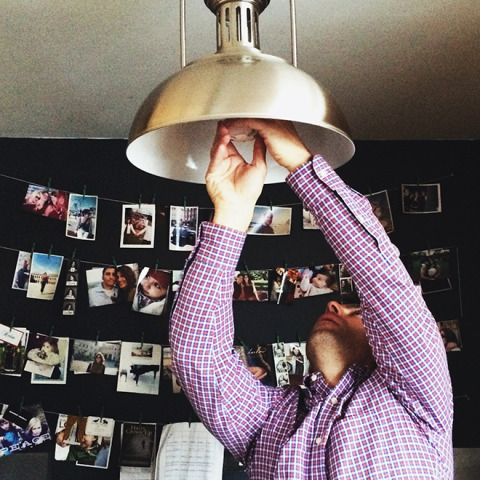
I have lived in my apartment for a little over ten years. Pre-children. Pre-Mike. Pre-pretty much everything. When I moved in, it was a brand new building and I was taking a risk buying in a slightly grungy neighborhood. My, how times have changed.
Now, Manhattan’s East Village is a very family-friendly place. The once-drug infested Thompkins Square Park boasts three bustling playgrounds and a farmer’s market on the weekends.
Our apartment, however, has remained pretty much the same.
Well, if you discount the growing number of toys taking up every inch of floor space.
When I first moved in, my apartment was outfitted with very utilitarian lighting fixtures. Not utility chic, mind you. I like that look and see it in some of my favorite restaurants. I’m talking about lighting fixtures you would find in your office building fire stairwell. I think the building designer always intended for the occupants to make their own lighting choices so he didn’t put much thought into what was hanging from the ceilings.
I didn’t change them at the time because I had no money after purchasing an apartment. Plus, as a single person, I was focusing on my wardrobe as opposed to my home decor. (Isn’t it funny how priorities change?)
By the time, Mike moved in, I was used to the fixtures and didn’t really think about them. We did hang a chandelier over the dining room table but that was it. Everything else remained as it was.
When people from the ENERGY STAR program contacted me about changing my lighting over to ENERGY STAR certified LED lighting, I realized it was a good opportunity to finally replace those ugly fixtures, which are also the three lights we use the most— our entrance way, the main hallway and the kitchen.
But I was also a little wary, because I remembered buying energy efficient bulbs when CFLs were first touted as being long lasting and energy saving, but thought the light was too harsh and didn’t give off the nice warm glow I was accustomed to having at home. So I returned them, switched back to regular energy-sucking incandescent bulbs and never thought about it again.
ENERGY STAR experts assured me that energy efficient bulbs have come a long way. You just have to make sure your bulbs are ENERGY STAR certified to ensure the quality of the light matches the incandescent bulb you are replacing and this is particularly important for LED bulbs. An ENERGY STAR label means the light has undergone rigorous testing and has been independently certified to ensure it performs the way you expect it to like delivering on brightness, color and shining light where you want it.
They also showed me a large variety of ENERGY STAR certified fixture options which got me really excited about finally upgrading the lighting design in my apartment. Yes, it would be cost saving and energy efficient, but they would also look a hell of a lot nicer!
We wanted something bright in the kitchen and something warmer in the entrance and main hallway, which is the light that Mazzy and Harlow make me leave on when they go to bed.
Want to see what I picked?
Before and after of the kitchen:
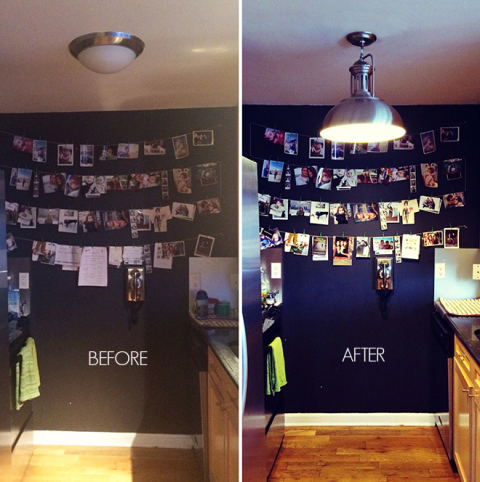
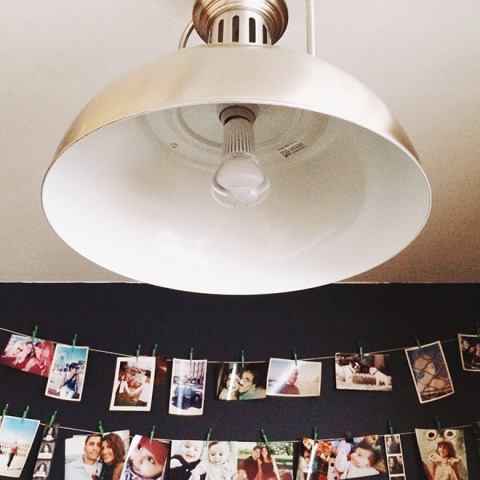
Before and after of the main hallway:
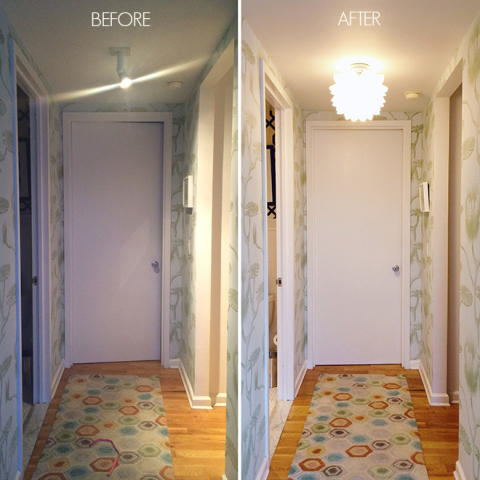
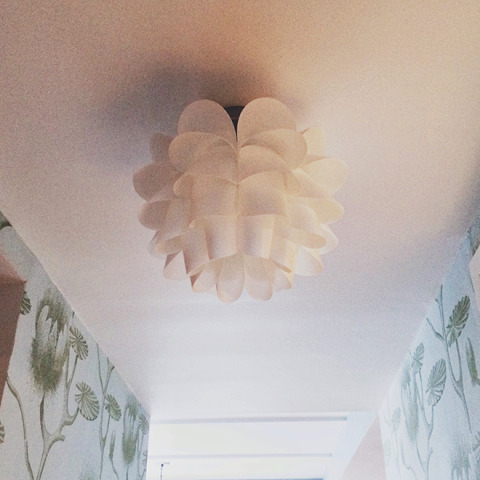
Before and after of the entranceway:
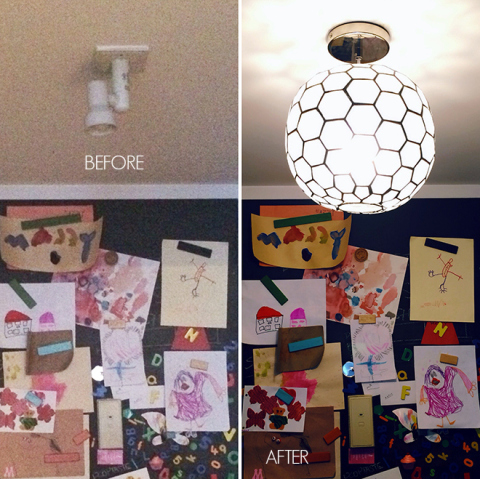
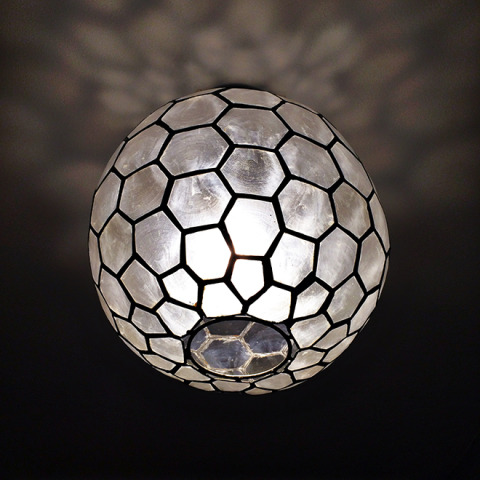
Philips supplied me with ENERGY STAR certified omnidirectional A type LED bulbs, in 75 watt equivalent.
Not only does each light make our apartment look more like home, they will also save us about $240 over the course of their predicted 22-year life span. (Check out “22 Things I Want My Daughters to Know in 22 Years“, you still have until end of today to enter my ENERGY STAR giveaway.)
According to ENERGY STAR, if every household switched just one bulb to an ENERGY STAR certified bulb, we would save enough energy to light two million homes for a whole year, save $460 million in annual energy costs and prevent six billion pounds of greenhouse gas emissions, equivalent to that of 550,000 cars.
I can think of no better excuse to give your home some lighting decor love.
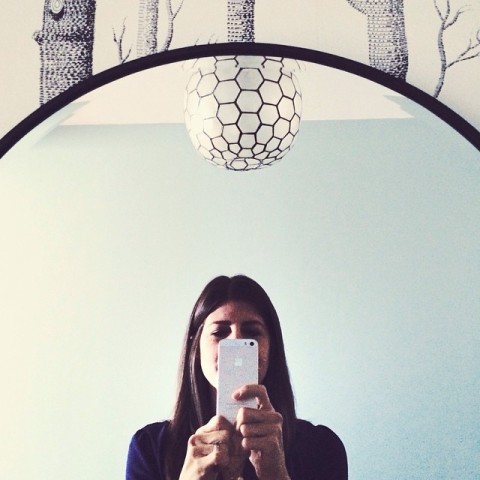
——————————
This post has been sponsored by ENERGY STAR, a U.S. Environmental Protection Agency (EPA) program that has been helping businesses and individuals save money and protect our climate through superior energy efficiency for the past 20 years.
To learn more about ENERGY STAR certified LED bulbs, click here.













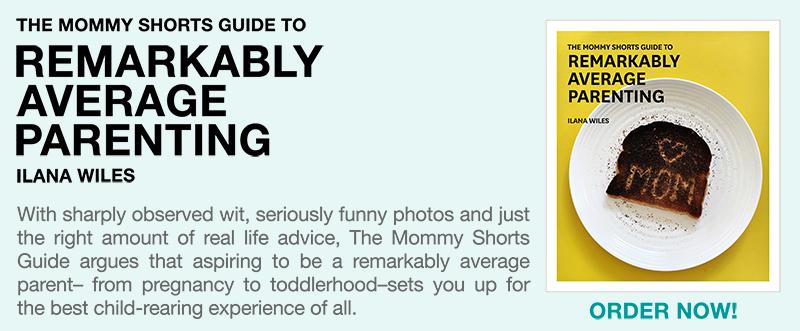




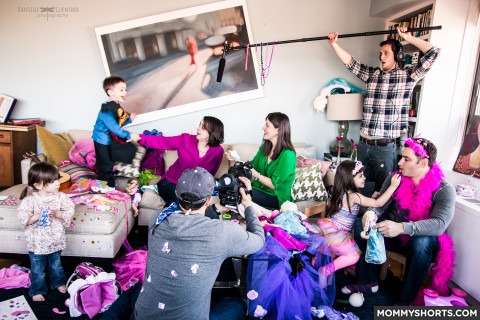






Can I ask what you are using the hang the pictures on the wall in the kitchen? We also live in an apartment so I need something that wont damage the walls. They want us to use command hooks but it is so hard. I got these cute wall poles that hang on the walls from ikea and you hang baskets from them for fruit and such, but can’t find anything to hold them up since we aren’t allowed nails. ;(
Thanks for asking Kelli. I want to know too 🙂
Also is that magnetic paint in your entry to hang the girls paintings?
Our front door is metal so it’s already metallic. I painted over it with regular chalkboard paint.
It’s something I made myself with eye hooks, string and alligator clips. Unfortunately, you do need to screw the eye hooks into the wall at the end of each row.
Where did you get the lighting fixtures for your hallway and entranceway??? I LOVE them!!!
The light hanging in the entrance is from West Elm but I can no longer find it anywhere on their site, so I’m guessing it is discontinued.
Here’s the link for the hallway light: http://bit.ly/1Ce3H5y
this makes it so that i cant wait until we move out of my MIL and get a place of our own.
Fabulous upgrades! I signed up a few years ago for First Energy’s program and they sent me a huge box of $150 worth of bulbs, power strips and night lights. The bulbs were awesome and we’ve never looked back at the inefficient bulbs. The quality of light has come a LONG way!
I do believe alll the ideas you’ve offedred in your post.
They’re very convincing and willl definitely work.
Still, thhe posts are too brief foor novices. May you please extend them a little from
next time? Thanks for the post.
Would you mind sharing the source of the kitchen light?! Love !
It’s been so long I can’t see the reply for the make of the energy star kitchen light you switched to. Would love to know. Thanks in advance.